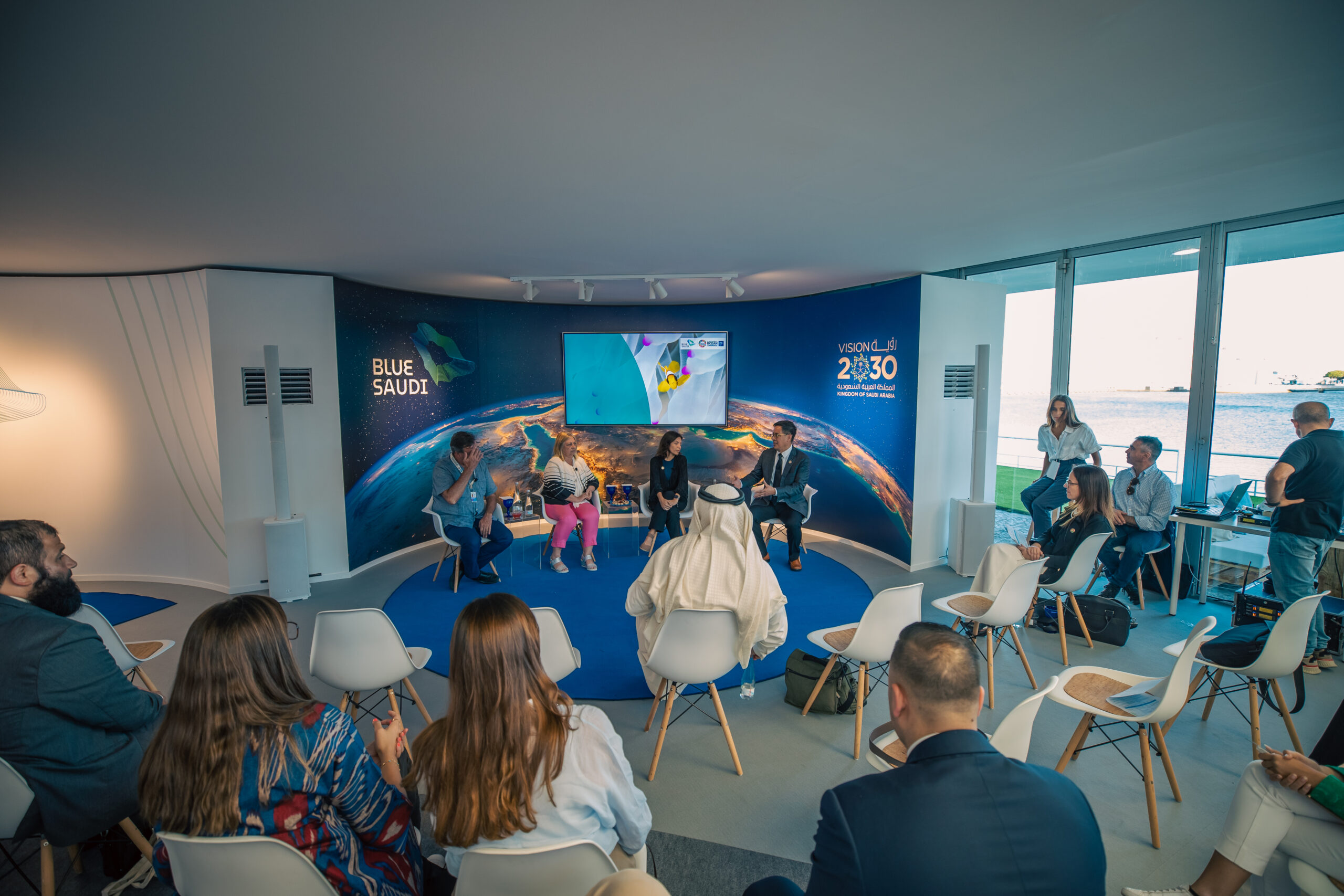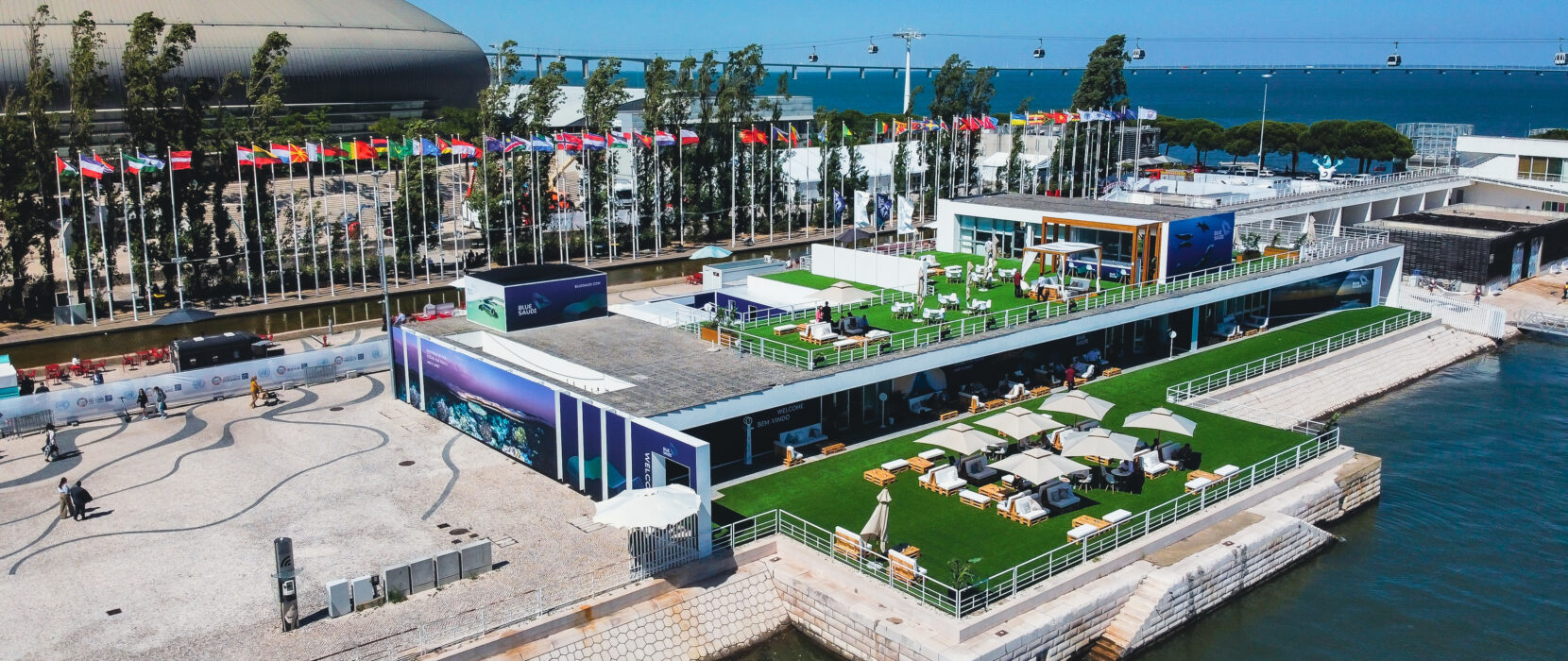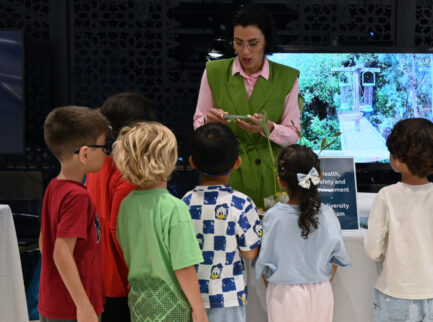The Blue Saudi pavilion opened its doors to the world in late June at the UN World Ocean Conference. The only country with a dedicated pavilion at the event, the Kingdom showcased its leading role in prioritizing the health of the Red Sea, as well as research into its unique habitats and ecosystems. Representing the only academic partner of the pavilion, Dr. Tony Chan, KAUST President, cemented the university’s ambition to contribute to the Kingdom’s blue strategy.
KAUST has a track record of excellence in studying and protecting the marine environment. One of the most prominent research bodies working toward sustainable oceans is KAUST’s Red Sea Research Center (RSRC), which placed the University as a key science and innovation partner at the Blue Saudi pavilion.
Previously, the Kingdom has announced key commitments as part of broader ambitions to drive local sustainability, including increasing the percentage of marine protected areas to 30 percent, and planting 100 million mangroves by 2030. These goals are well aligned to Vision 2030, the country’s unique transformative economic and social reform blueprint as well as to the global Sustainable Development Goals, particularly Goal 14: Life Below Water.
Oceans cover 70% of the Earth’s surface and are our planet’s life support system. They help to regulate our climate, generate at least 50% of the Earth’s oxygen, are an important source of food and employment, and contain incredible biodiversity. They are home to up to 80% of all animal species.
Science leads the Wave
The Red Sea is the world’s warmest and saltiest sea with extensive shallow shelves, known for their marine life and corals. It is home to more than 1,000 invertebrate species and 200 types of soft and hard coral, yet there is still a lot we don’t know about this incredible environment.
A cornerstone of Blue Saudi is science. KAUST is researching the unique habitats of the Red Sea to better understand their tolerance to rising temperatures due to climate change. This research aims to help expand coral habitats, enabling biodiversity to flourish. Given the increasing importance of tourism for the Kingdom, KAUST has partnered with pivotal stakeholders such as The Red Sea Development Company (TRSDC) through research deeply focused on spatial planning and technology development to ensure the tourism project doesn’t damage local ecosystems, but helps to enhance them.

At the UN World Ocean Conference 2022 the Blue Saudi Pavilion hosted an event to facilitate a conversation around the role of science and innovation in enabling regenerative development of the Red Sea, and how meaningful partnerships and collaboration, coupled with good governance, are driving positive action in the marine environment.
“The Blue Saudi Pavilion, the largest national pavilion in the UN Oceans Conference 2022, provided an opportunity to showcase the commitment of the Kingdom of Saudi Arabia to achieving SDG14, Life Below Water, the focus of the conference, and the role of the Kingdom as an emerging ocean conservation leader, supported by world-class science ”, said Distinguished Professor Carlos Duarte, who along with Professor Susana Agusti and Associate Professor Raquel Peixoto integrated a KAUST organized panel discussion. The event also counted with the presence of KAUST’s Chief of Staff, Dr. Teofilo Abrajano, who moderated the panel discussion, and Dr. Ana Margarida Costa, Head of Sustainability, who served as the MC of the event.
Ocean Regeneration
Through increased designated conservation zones and Marine Protected Areas, Saudi Arabia aims to remove chronic impacts on the Red Sea and deliver on ambitious climate commitments. To map out these potential zones, a pioneering study involving an international team of researchers, led by Professor Duarte, using destination-scale marine spatial planning simulations, demonstrated that through careful design and planning, coastal development at The Red Sea Development projected sites can enhance, rather than jeopardize, conservation.
Cementing its conservation and enhancement ambitious goals, the company, whose environmental science team features several KAUST PhD graduates, just released its first Environmental Baseline Survey. Considered the largest ever environmental survey by a development company, the survey aimed to comprehensively analyze the populations and habitats of the species inhabiting the more than 200km of Red Sea coastline integrating the project.
“Ultimately, the Kingdom hopes to export scientific learnings and innovative solutions that equip the world to confront the biggest challenges facing us today,” said Dr. Mohammad Qurban, head of Saudi delegation to UN Ocean Conference and CEO, National Center of Wildlife. “We will do this by playing a connecting role, bringing together countries that border the Red Sea, and ensure a comprehensive approach to its protection is developed and successfully delivered.”
The UN Ocean Conference 2022 was held in Lisbon 27 June – 1 July. Learn more about the Blue Saudi pavilion and event here.[gravityform id=”1″ title=”true” description=”true”]




